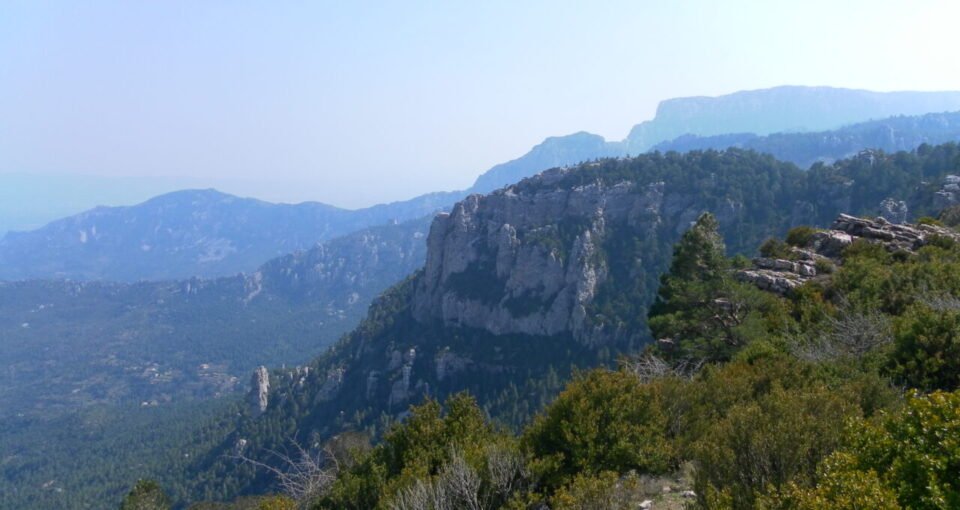Parc Natural dels Ports, Spain
Harry Cox, April 16, 2012

Adventurers in western France and northern Spain naturally look to the Pyrenees for a multitude of summer and winter explorations. Given that I would be in north-eastern Spain in mid-March, and hankering after a bit of sun, I decided to venture south to the lesser known Parc Natural dels Ports. A former hunting reserve, the region became a protected national park in 2001, marking this dramatically mountainous coastal region of Southern Catalonia on my adventure map. Ten years later, Parc Natural dels Ports remains little known outside Spain, offering me a visitor-free three days to kick-start my summer hiking season.
In fact, the only people I came across were farmers tending their olive groves on the lower parts of the mountains, and a pair of lumberjacks working deep in the forests. These pine forests cover much of the higher slopes which eventually open out onto exposed rocky ridges offering stunning views over the Ebro Delta to the east, and the mountainous hinterland to the west.
The Park is home to a variety of wildlife including wild boar and the impressive Spanish ibex, easily recognised by their long sweeping horns. The region is also famed for its birdlife, most noticeably a number of large birds of prey. Certain areas of the Park are also used for the grazing of wild bulls and whilst this can seem a little unsettling, I gave them a wide berth and encountered no problems.
Getting there
The scarcity of visitors explained by the remoteness, for the Park’s boundaries lie approximately 20kms from Tortosa. This relatively large town can be reached by buses, run by Grupo Hife, which leave Barcelona several times a day and take a little over 2 hours to cover the 200kms to Tortosa. A hire car or taxi would be the simplest way to access the park from Tortosa, as my attempts to hitch-hike met with limited success! However, if time is not an issue then the distance can be comfortably walked and affords a good opportunity to get to grips with the surrounding terrain.
Important information
Although the Park contains several picturesque villages, any supplies should be bought in central Tortosa. Reliable walking maps can be purchased in Tortosa’s main bookshop. A good map is essential, as straying from the paths is unadvisable given the rocky and dramatic nature of the mountains. Apart from the existence of man-made fonts, I found water difficult to find and routes should therefore be planned with this in mind. The Park also contains a number of refuges, which may be manned in the busier summer period, and permission should be sought before camping.
In the time I had available I was only able to explore the North Eastern part of the Park but full information for the entire area, including camping permission and keys to certain refuges, can be found in the Park information office in the Avenida Val de Zafan, 43520 Rocquetes (on the outskirts of Tortosa). Information about the Park in english is difficult to find apart from the guidebook to the area published by Cicerone. The Park also offers good rock climbing and canyoning opportunities.
When to go
As a result of its Mediterranean climate, dels Ports offers opportunities for trekking all year round with the tops of the mountains experiencing some light snowfall for only a handful of days each winter. For my visit in mid-March the day time temperature in the mountains ranged between 15-20°C, rising by as much as 10° in the valleys. At night the temperature dropped to around 7°. By the high summer season of July day time temperatures can routinely exceed 30° and rarely fall below 20° at night.
For more information, visit gencat.catc